A mat foundation is a thick reinforced concrete slab supporting arrangements of columns or walls in a row or rows and transmitting the loads to the soil. It is used to support storage tanks, industrial equipment, silos, chimneys, and various tower structures.
A mat foundation is used when the subsoil is weak and column loads are so heavy that the conventional spread footings cover more than 50 % of the building area. It is common to use mat foundation or deep basements to transfer the column loads to the underlying soil as well as provide a floor slab for the basement. A mat is preferred to the individual footings when the soil mass is very erratic and contains pockets and lenses of compressible soils. In such cases, individual spread footings are subjected to large differential settlements whereas the mat bridges over the patches of the weak soils and the differential settlement are considerably reduced.
Types of Mat Foundation
The types of mat foundations commonly employed are
- Flat plate mat
- Plate thickened under columns
- Two-way beam and slab
- Plate with pedestal
- Rigid frame mat
- Piled raft
Tech Tip: Load/access your essential Circuit design & simulator software into the cloud with top-notch hosted Citrix XenDesktop at an affordable XenDesktop pricing from CloudDesktopOnline. Boost your team productivity with hosted SharePoint, Exchange, and managed azure services from Apps4Rent.
Flat Plate Mat – A flat plate mat is used for fairly small and uniform column spacing and relatively light loads. A flat plate type of mat is suitable when the soil is not too compressible. A line sketch of this type of mat is shown in Fig 1.
Plate Thickened under Columns – For columns subjected to very heavy loads usually the flat plate is thickened under columns as shown in Fig 2 to guard against diagonal shear and negative moments.
Two-way Beam and Slab – When the column spacing is large and carries unequal loads it would be more economical if a two-way beam and slab raft as shown in Fig 3 is used. This type of mat is particularly suitable when the underlying soil is too compressible.
Plates with Pedestals – The function of this mat is the same as that of a flat plate thickened under columns. In this mat, pedestals are provided at the base of the columns.
Rigid Frame Mat – This type of mat is used when columns carry extremely heavy loads. In such a design, basement walls act as ribs or deep beams. When the depth of the beam exceeds 90 cm in a simple beam and slab mat, a rigid frame mat is referred to. Fig 4 shows a typical rigid frame mat.
Piled Raft – In this type of construction, the mat is supported on piles as shown in fig 5. This type of mat is used where the soil is highly compressible and the water table is high. This type reduces settlement and controls buoyancy.
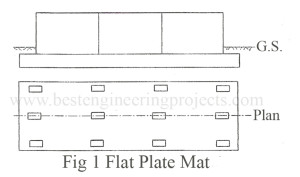
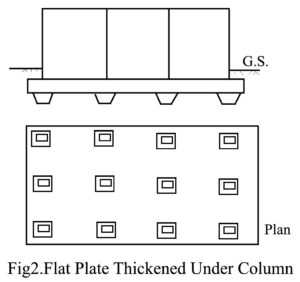
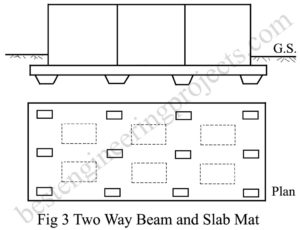
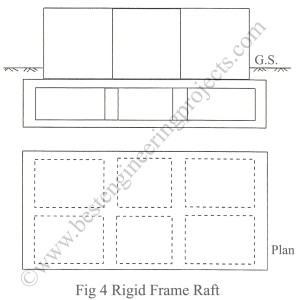
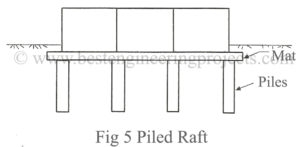
here in south korea, my friend wants to build a 26×26 two story sandwich panel house. the builder offered to pour a 60cm (24 inches!) deep single slab on top of which will sit another 7.5 cm of aerated and then finish concrete with in floor water heater tubes in there somewhere. there are columns spaced throughout the interior of the house to distribute the weight so it makes sense to me to have the thick concrete in the center of the slab, as well, as the heavy metal deckplate above is also covered in concrete and heater tubes. i have searched and found nothing online… have you ever heard of anything like this? what do you think? if poured over four days at least (6″ a day, maybe waiting a week in between? or right away?) i would figure then does it seem reasonable?
how we find the ultimate bearing capacity